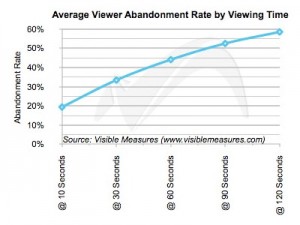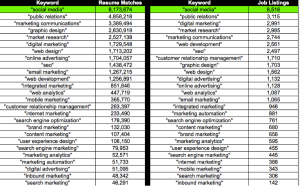What You Learn When You Actually Do Social Media
More than a decade after the explosion of social media, it’s harder than ever to build followers. So many platforms, so little time.
So have you figured out how to use Periscope yet? Of course you have.
Ten years after the social Big Bang, many smaller firms have barely dipped their big toe into the social bathtub. Even some of the biggest brands demand more dot-connecting between social media activity and revenue, especially in the business-to-business community. There are the haters. The doubters. The skeptics. And the conference speakers who regale the audience with Donald-Trumpseque stories of “huuuuge” growth. And their stories, frankly, are not helpful to us folk in the trenches trying to help firms implement the basics.
Just saying.
To stay current with social media, though (because no client wants to be on the bleeding edge), we both nurture social projects on the side. Melissa is a vintage-dealer; it’s her “jobby” (hobby-job selling vintage). Her brand is Megillicutti, and her bucket-list dream is that her home would be featured in a national magazine. A magazine feature would offer her free publicity to her nascent brand.
Dave and his fly fishing buddy of 35 years, on the other hand, created a weekly podcast (2 Guys and a River: www.2guysandariver.com), and his dream is for Orvis or Sage or Simms—one of the great outdoor brands—to say, “Hey, could we advertise on your podcast?” Of course, that means building subscribers to the podcast feed. The metric is singular and clear.
Fortunately, we’re both making our house payments from our day jobs. Over the last 12 months, though, we’ve learned a few things about social (old and new), and we’d thought we’d pass them along to you:
You Learn by Doing Not by Going to Industry Conferences
This is a bit of a dig, but only by doing can you know what will work—for you or for your organization.
New Year’s Day 2015, Melissa was caught up in the euphoria of a clean-slate home, cleared of Christmas’s sparkle and clutter. Dusk’s last light cast an inviting glow on her dining room (or so she says). Its beauty waxed in its sparseness. She grabbed her phone, snapped a picture, and posted it on Instagram with the caption, “Enjoying my home Christmas-free.”
Three people, of her meager 25-person following (all Facebook friends), “liked” her Instagram post.
Instagram (IG) was a mystery. Melissa’s teenage nieces used it as nimbly and frequently as she used Facebook. She joined to follow them, but soon found that Instagram was an easy way to follow her favorite design bloggers—without having to follow their blogs. Melissa filled her feed with DIYers, decorators, designers, and dealers who used IG galleries to build their brands. Galleries were just that—a curation of one person’s creative expression and identity. As a hobbyist antiques dealer, she was intrigued.
The first week she posted random—and garishly-filtered—pics on Instagram of her son baking, her cat gazing at herself in the mirror, and a few of her vintage collections. Lacking focus, it was social branding at its worst. As she tried to figure out what and when to post, she studied the galleries of those who were doing it better and had followings to prove it.
Then Melissa stumbled across the gallery of a suburban mom, who posted a pic of her living room being photographed for a popular design magazine. The ‘burban mom had a little over 1,000 followers at the time. And no blog. She merely had a beautiful home, a point of view, and a credible following. This was Melissa’s rudimentary lesson in being picked up by magazines: a consistent point of view attracts attention.
The point is that to understand social media is to do social media. You get only inspiration from a speaker; the practical, how-to stuff of social is something you can only learn by doing and through failure.
Pick a Social Media Platform
Corporations typically create a company page on LinkedIn, and set up accounts on channels on Google+, YouTube, Twitter, Facebook, Pinterest, Medium, Instagram, Vine, Periscope, etc. Then ignore them, most often because they are overwhelmed by the options and demands.
Social is like a haunted house with endless rooms and hallways. There’s always one more hallway that you should explore.
But in reality, to build followers, you need to pick a platform, a single platform. Go deep with one.
Melissa chose Instagram. Dave chose Twitter. It all depends on where you think your audience is, where they are, and what, exactly, you want to accomplish.
With 2 Guys and a River, Dave simply wanted to build traffic on his site and grow the subscribers to the podcast feed So while he still curates and posts the notifications of new podcast episodes and articles on the other platforms, his social goal is mostly to build Twitter followers. Twitter is merely a means, though, to more feed subscribers. He’ll need at least 8,000 to 10,000 subscribers to the feed before his dream of a big brand asking for time on the podcast will be realized. Fly fishing is a niche of the general fishing industry. The niche is small. You don’t need a mass audience, but you need rabid core.
Melissa chose Instagram because her key market segment (25- to 35-year-old women) comprises the largest segment of IG. She is currently less interested in building traffic to her blog or web site (‘cause she doesn’t have one) and singularly focused on building followers on Instagram.
Set a Social Media Follower Goal
Okay, you didn’t need to read a MENG post to discover such a profound truth, but because Melissa wanted her home to be featured in a magazine, she set out to grow a following: 1,000 followers by 2016. If the ‘burban mom could do with 1,000 followers, so could Melissa.
By Summer 2015, she had reached her 1,000 follower goal. And during the ascent, four design magazines requested scouting images for possible inclusion on their platforms. She says, “I wouldn’t call myself a master of Instagram; I haven’t achieved Insta-success with tens of thousands of followers, like the rare somebodies do. But nine months, 305 posts, 2,100 followers, and four scouts later, I have learned through the daily slog of posting what it takes to grow a loyal following from a few.”
Dave set a paltry goal of 100 subscribers to the podcast feed by September 1. He’s up to 150, and it’s growing a bit faster than when he started. His next milestone is 500. It has been harder than it looked.
Just like most other areas of our lives, the most specific goals you set, the more likely you’ll achieve them. And as with most goals, it’s the day-to-day small steps (for Melissa, posting every day, and for Dave, creating a weekly podcast plus a weekly article) that get you there.
Be Your Most Interesting Self
The first few weeks, Melissa says her gut knotted with each post.
Is what I shared likeable? What she really wondered was whether people would follow her. Insecurity led to self-censorship, or a bending to what she thought others would like rather than what was quintessentially Megillicutti. Within the first month, though, she finally figured out that to grow, she had be her authentic self.
Whatever she posted would be because it inspired her. Because she had an opinion. Because she had a story to tell.
She finally concluded that her entire gallery had to tell a story that only she could narrate—both visually and verbally. This meant ruthlessly cutting some early sore-thumb images that didn’t tell that story; posting images that reflected the lifestyle she sold; paying attention to styling and photography; and writing that brought the images to life.
While IG is image-driven, it became a place where her two passions—vintage design and words—collided. It was a deliberate brand move combining the two: in a space saturated with beautiful images, what could she uniquely offer?
As she shared the stories behind her vintage style and frustrations in designing her small home, her personality, passion, and vulnerability oozed out. And in the ooze, people stuck around. As one follower said, “I love your photos, but it’s the wonderful way you write that keeps me checking your feed.”
For those building a platform, this is the primary question you must answer: what will you uniquely offer that will keep people coming back for more?
Dave and his 2 Guy’s partner focused their podcast content not on the mere technical aspects of fly fishing—fly tying, fly casting, and techniques. That space is already cluttered (er, littered) with experts. Dave positioned the podcast with an editorial grid that included some more technical elements but with a much broader appeal—more like NPR’s Car Talk. The podcast content is still about fly fishing, but focused on the stories of fly fishing and life on the river.
The point is that Dave and his partner could not pose as fly fishing experts. They are not professionals or outfitters or guides; they are amateurs with years of experience, a truckload of stories, and a dash of wit and wisdom.
Authentically Commit to Community
Social media is not “Me”-media. It’s built upon give and take. Takers who never give will never get on social media. This is truth, confirmed by Melissa’s followers when she informally asked her followers a few weeks ago to share what it takes to create a loyal following on Instagram. One follower (who has a following three and a half times larger than Melissa’s) summed it up this way: “It’s about taking a positive, honest interest in others and trying to give back to our community.”
This sentiment has been echoed by other followers, most notably when Melissa recently shared her struggle with comparing herself to other IG design icons. She received an outpouring of support from many who were moved by her transparency and said she had similarly supported them when they most needed encouragement.
Leaving meaningful comments, as well as responding meaningfully to people when they comment, is a hallmark of Instagram. But the principle is one that can—and should be applied—to all social media: sincerely give of yourself, and you will receive.
This is in fact was Melissa’s MO as she devoted myself to growing her following the first few months. “Fishing for followers,” she called it; she would leave encouraging and detailed comments on people’s posts (something beyond “Nice pic!”), hoping they’d bite into a conversation, so she could reel them into her feed. One out of five times, she would catch a new follower. But a heap of followers is meaningless if they aren’t engaged. To create engaged followers, you must continue to engage your followers, whether via their posts or yours. As you leave and respond to comments, you become more than a username; you become a person who cares about others and whom others care about.
In short, be genuine. Be engaged.
None of the above is earth-shaking or earth-shattering. Just the gritty stuff you learn when doing social as opposed to consulting on social.
Digital & Social Articles on Business 2 Community(50)








